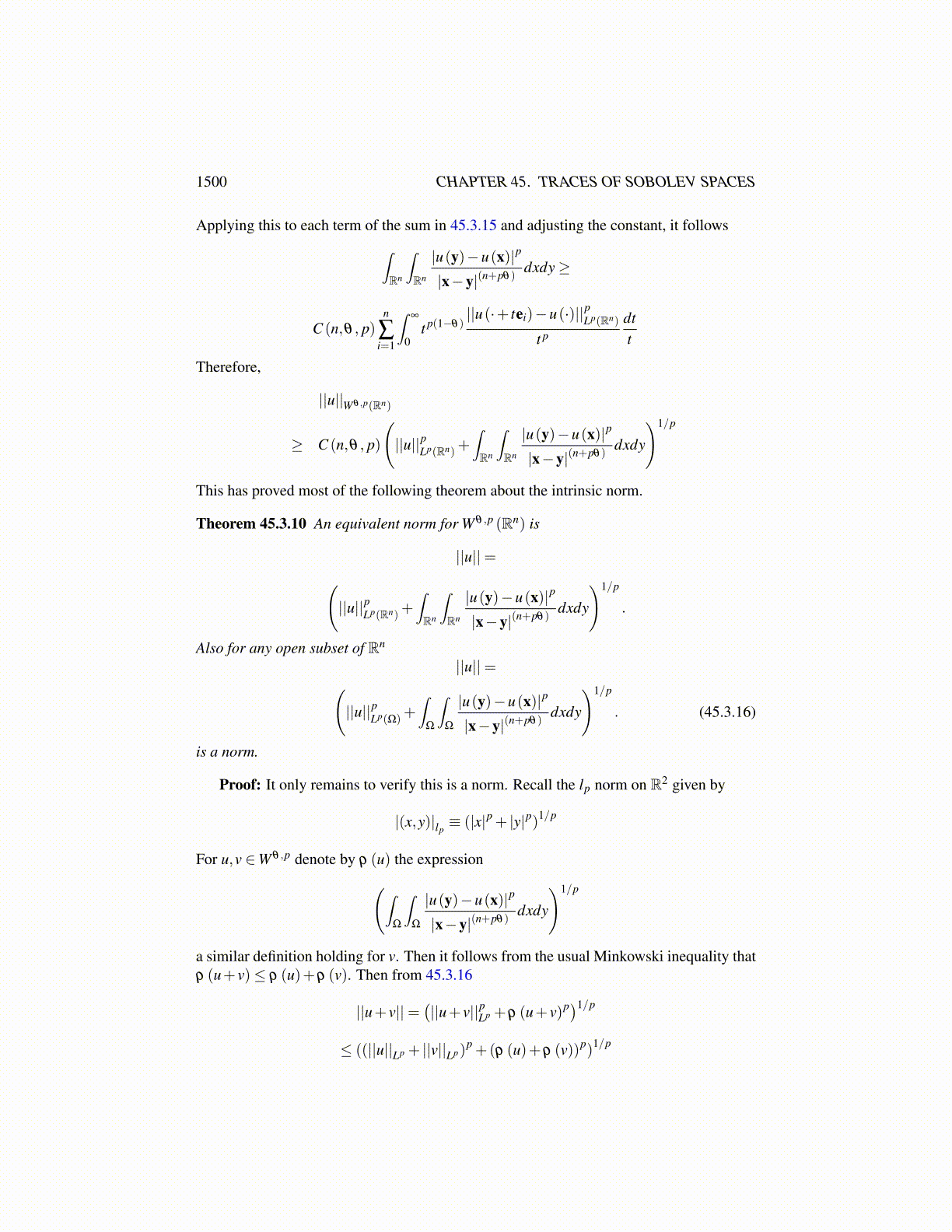
1500 CHAPTER 45. TRACES OF SOBOLEV SPACES
Now taking the sum inside and adjusting the constants yields
≥C (n,θ , p)∫Rn
∫Rn
|u(y)−u(x)|p
|x−y|(n+pθ)dxdy
Thus there exists a constant C (n,θ , p) such that
||u||W θ ,p(Rn) ≥C (n,θ , p)
(||u||pLp +
∫Rn
∫Rn
|u(y)−u(x)|p
|x−y|(n+pθ)dxdy
)1/p
.
Next start with the right side of the above. It suffices to consider only the complicatedterm. First note that for a a vector, (
n
∑i=1
a2i
)p/2
≥ |ai|p
and son
∑i=1|ai|p ≤ n
(n
∑i=1
a2i
)p/2
= n |a|p
from which it follows1n
n
∑i=1|ai|p ≤ |a|p
Then it follows ∫Rn
∫Rn
|u(y)−u(x)|p
|x−y|(n+pθ)dxdy≥ 1
n
∫Rn
∫Rn
∑ni=1 |u(x1, · · · ,xi−1,yi,yi+1, · · · ,yn) − u(x1, · · · ,xi,yi+1, · · · ,yn)|p
|x−y|(n+pθ)dxdy (45.3.15)
Consider the ith term. By Fubini’s theorem it equals
1n
∫· · ·∫ 1(
(yi− xi)2 +∑ j ̸=i (y j− x j)
2) 1
2 (n+pθ)
|u(x1, · · · ,xi−1,yi,yi+1, · · · ,yn) − u(x1, · · · ,xi,yi+1, · · · ,yn)|p
dyidx1 · · ·dxi−1dyi+1 · · ·dyndy1 · · ·dyi−1dxi · · ·dxn
Let t = yi− xi. Then it reduces to
1n
∫· · ·∫ 1(
t2 +∑ j ̸=i (y j− x j)2) 1
2 (n+pθ)
|u(x1, · · · ,xi−1,xi + t,yi+1, · · · ,yn) − u(x1, · · · ,xi,yi+1, · · · ,yn)|p
dtdx1 · · ·dxi−1dyi+1 · · ·dyndy1 · · ·dyi−1dxi · · ·dxn